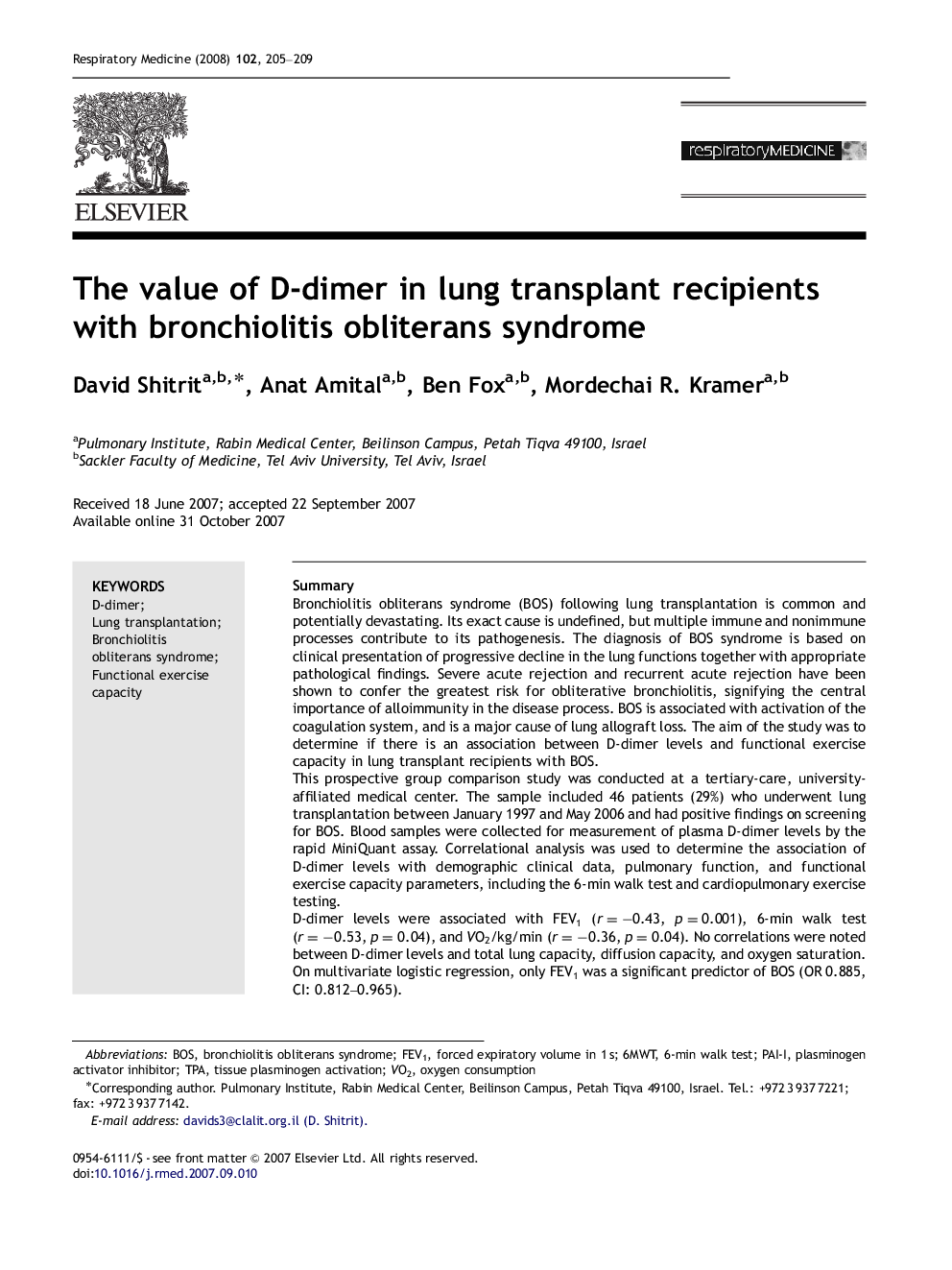| Article ID | Journal | Published Year | Pages | File Type |
|---|---|---|---|---|
| 4212421 | Respiratory Medicine | 2008 | 5 Pages |
SummaryBronchiolitis obliterans syndrome (BOS) following lung transplantation is common and potentially devastating. Its exact cause is undefined, but multiple immune and nonimmune processes contribute to its pathogenesis. The diagnosis of BOS syndrome is based on clinical presentation of progressive decline in the lung functions together with appropriate pathological findings. Severe acute rejection and recurrent acute rejection have been shown to confer the greatest risk for obliterative bronchiolitis, signifying the central importance of alloimmunity in the disease process. BOS is associated with activation of the coagulation system, and is a major cause of lung allograft loss. The aim of the study was to determine if there is an association between D-dimer levels and functional exercise capacity in lung transplant recipients with BOS.This prospective group comparison study was conducted at a tertiary-care, university-affiliated medical center. The sample included 46 patients (29%) who underwent lung transplantation between January 1997 and May 2006 and had positive findings on screening for BOS. Blood samples were collected for measurement of plasma D-dimer levels by the rapid MiniQuant assay. Correlational analysis was used to determine the association of D-dimer levels with demographic clinical data, pulmonary function, and functional exercise capacity parameters, including the 6-min walk test and cardiopulmonary exercise testing.D-dimer levels were associated with FEV1 (r=−0.43, p=0.001), 6-min walk test (r=−0.53, p=0.04), and VO2/kg/min (r=−0.36, p=0.04). No correlations were noted between D-dimer levels and total lung capacity, diffusion capacity, and oxygen saturation. On multivariate logistic regression, only FEV1 was a significant predictor of BOS (OR 0.885, CI: 0.812–0.965).We conclude that in lung transplant recipients with BOS, D-dimer levels are highly associated with functional exercise capacity and may serve as a useful marker for noninvasive monitoring. Further coagulation assays are needed to complete our observations.
